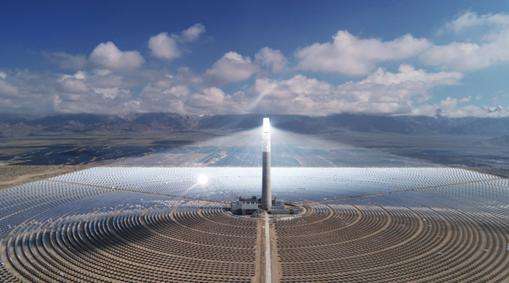This situation occurs when the generator operates in parallel with the electrical network. At this moment, the frequency of the generator is the same as that of the electrical network, so its speed is constant (the speed of the turbine is constant). ). If the air inlet is increased, the turbine power will increase. The force driving the generator also increases, and the steam turbine (and generator) must accelerate - the angle between the magnetic poles of the stator and the magnetic poles of the rotor increases, the power angle increases, and the active power output increases (power output increases);
The stator induced potential increases and the output current increases --- power output increases.
So the more steam comes in, the more electricity is generated; the steam drives the steam turbine and converts it into kinetic energy, which drives the generator and converts it into electrical energy.
By increasingair inlet and power consumption of a grid-connected alternator, active electrical energy production can be increased - power generation capacity increases
Increase excitation current , can increase the reactive power output --- the power factor can be adjusted;
According to the enthalpy difference between the inlet and outlet steam of the turbine, the calculated power of the The turbine shaft is the active or apparent power. generator power ah?
A steam turbine, also called a steam turbine engine, is a rotating device for producing high temperature and high pressure steam that passes through a fixed nozzle and becomes an accelerated air flow and is sprayed on the blades. , rotating the rotor equipped with rows of blades. At the same time, we do a good job outside. Steam turbines constitute the main equipment of modern thermal power plantss and are also used in the metallurgical industry, chemical industry and ship power plants.
The working principle of a steam turbine:
A steam turbine is an external combustion rotating machine that can convert the thermal energy of steam into mechanical work. Once the steam from the boiler enters the steam turbine, it passes through a series of annularly arranged nozzles and moving blades, converting the thermal energy of the steam into the mechanical energy of rotation of the turbine rotor . The steam converts energy in different ways in the steam turbine, thus forming steam turbines with different operating principles.
1 The shaft power of the steam turbine is the active power (KW or MW)
2 The 6 MW generator means the normal production of 6 MW of power active
;3 Generator While producing poweractive power, it also produces reactive power (MVAF). The vector sum of the active power and the reactive power is the apparent power (MVA) emitted by the generator;
4 The generator. emits Reactive power does not operate, but can meet the reactive power requirements for the operation of inductive components (such as motors) in the system. Therefore, the generator power and the turbine power are subject to the law of conservation of load energy.














